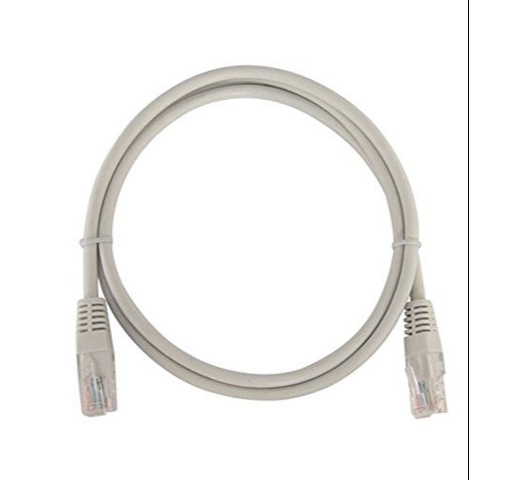
Cat6 UTP Patch Cord 1M Grey
by D-link
The Cat6 UTP Patch Cord is a high-quality networking cable designed for connecting various devices, such as computers, routers, switches, and other network equipment. This particular patch cord has a length of 1 meter and comes in a gray color.
- Category 6 (Cat6) standard: The cable is built to meet the Cat6 standard, which ensures reliable performance and faster data transfer rates compared to previous standards like Cat5e. It is backward compatible with Cat5 and Cat5e devices.
- Unshielded Twisted Pair (UTP) construction: The patch cord utilizes UTP construction, which consists of four twisted pairs of copper wires. UTP cables are widely used in Ethernet networks and provide good resistance against electromagnetic interference (EMI).
- Enhanced data transmission: With its Cat6 specification, the patch cord is capable of transmitting data at speeds up to 10 Gigabits per second (Gbps) over short distances and up to 1 Gigabit per second (Gbps) over longer distances. This makes it suitable for demanding applications such as high-definition video streaming, online gaming, and large file transfers.
- RJ-45 connectors: The ends of the patch cord are terminated with RJ-45 connectors, which are standard connectors used in Ethernet networks. These connectors are designed for easy and secure connections to Ethernet ports on devices.
- Flexible and durable design: The patch cord is constructed with high-quality materials to ensure flexibility and durability. It is designed to withstand frequent handling and bending without compromising its performance.
- Gray color: The patch cord comes in a gray color, which is a common color choice for networking cables. The color helps with cable management and organization, allowing for easy identification and differentiation of cables in a network setup.
| SKU | 1176 |
|---|
Reviews
Description
Cat6 UTP Patch Cord 1M Grey
The Cat6 UTP Patch Cord is a 1-meter long networking cable designed to transmit data at high speeds over local area networks (LANs). It is commonly used to connect computers, servers, switches, and other network devices to each other or to a central network infrastructure.
Key features and characteristics of the Cat6 UTP Patch Cord:
-
Category 6 (Cat6): This cable conforms to the Cat6 standard, which is an enhanced version of the Cat5e cable. It supports higher bandwidth and provides improved performance for data transmission.
-
Unshielded Twisted Pair (UTP): The cable utilizes UTP technology, where four pairs of twisted copper wires are used for data transmission. Unlike shielded cables, it does not have additional shielding to protect against electromagnetic interference (EMI). However, UTP cables are generally suitable for most indoor network installations.
-
Patch Cord: This cable is specifically designed for patching or connecting devices within a network. It typically has connectors (RJ-45) on both ends, allowing for easy plug-and-play installation.
-
Length: The cable has a length of 1 meter (3.28 feet). This length is commonly used for short-distance connections within a network rack, between adjacent devices, or in office environments where devices are in close proximity.
-
Color: The cable is gray in color. The color coding is often used to differentiate between different cable types or to aid in cable management and identification.
-
Data Transmission: The Cat6 UTP Patch Cord is capable of transmitting data at speeds up to 10 Gigabits per second (Gbps) over a maximum distance of 55 meters. For shorter distances, it can support even higher speeds.
-
Compatibility: The Cat6 UTP Patch Cord is backward compatible with previous Ethernet standards such as Cat5 and Cat5e. It can be used in networks that utilize older cable standards but provides optimal performance when used in conjunction with Cat6-compliant devices and infrastructure.
When using the Cat6 UTP Patch Cord, it is essential to ensure proper cable management, avoid sharp bends, and protect the cable from physical damage to maintain optimal performance and longevity.

